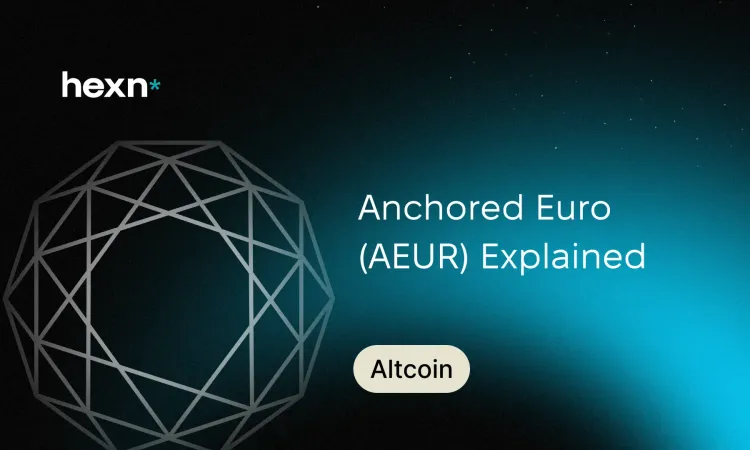Anchored Euro (AEUR) Explained
What Is Anchored Euro (AEUR)?
Anchored Euro (AEUR) is a euro-backed stablecoin introduced in 2022 by a Swiss issuer aiming to bring euro-denominated stability to digital assets. It’s designed to track the value of the euro on a 1:1 basis, offering crypto users a familiar fiat reference inside blockchain ecosystems. This matters because euro-backed tokens expand choices beyond dollar‑pegged options and can make euro-area payments and settlements faster and more programmable.
How the Peg Works
AEUR is issued by a regulated entity that holds euro reserves or equivalent backing to support the token’s value. The intent is to maintain a 1:1 peg—meaning one AEUR should equal one euro—so users can move euro value onto blockchains without holding cash.
Maintaining the peg typically relies on a combination of reserve management, transparency measures, and market mechanisms. When demand rises, the issuer mints tokens against newly deposited euros; when users redeem, tokens are burned and fiat is returned. The effectiveness of that process depends on operational controls, auditing, and the availability of on‑ and off‑ramp services.
How to Buy, Sell, or Redeem AEUR
Trading on Exchanges
The easiest way to acquire AEUR is through centralized cryptocurrency exchanges that list the token. These platforms let you swap other crypto assets or fiat currencies for AEUR and back again. Liquidity on exchanges helps keep market prices close to the intended peg.
Direct Issuance and Redemption
Issuers often provide a fiat on‑ramp: deposit euros to the issuer’s designated bank account and receive AEUR tokens in return, or redeem tokens for euros. This route may suit users who need larger transfers or prefer dealing directly with the issuer’s infrastructure.
Peer-to-Peer and Decentralized Markets
AEUR can also circulate on decentralized exchanges and peer‑to‑peer platforms, where users trade directly from wallets. These options can be useful when centralized rails are limited, but availability and liquidity vary across networks.
Potential Benefits of Using AEUR
- Diversification of stablecoin exposure: AEUR provides an alternative to dollar‑pegged stablecoins, helping users hedge against USD/EUR currency moves or regional risks.
- Simpler euro payments: Tokenized euros can lower friction for cross‑border transfers within Europe, speeding up settlement and reducing fees compared with traditional banking.
- Regulatory alignment: A euro-issued stablecoin that follows local rules can increase institutional comfort and promote wider adoption of tokenized fiat in regulated markets.
- Interoperability: As the token is deployed on smart‑contract platforms, it can be used across decentralized finance applications, merchant payments, and programmable contracts.
Key Risks and Limitations to Consider
- Reliance on central entities: The peg depends on the issuer’s reserves and operational soundness. Legal, financial, or governance issues at the issuer could affect token redemption and value.
- Peg instability and liquidity risk: In stressed markets, limited liquidity or sudden redemptions can push the token away from 1:1 parity with the euro.
- Regulatory changes: Shifts in local or regional rules for stablecoins and payment services could alter where and how AEUR can be used or exchanged.
Final Thoughts
AEUR represents a practical step toward bringing euro-denominated money onto blockchain infrastructure. For users and businesses operating in euros, a well‑managed euro stablecoin can speed payments, enable programmable finance, and diversify stablecoin holdings. At the same time, anyone considering AEUR should weigh issuer transparency, liquidity conditions, and evolving regulation before moving significant funds into tokenized euros.
